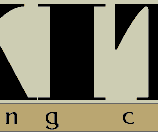 Save this page (51 kb)
Save this page (51 kb)
SEEKING THE ROOTS OF AKITAS DOGS ABROAD
(AIKEN NO TOMO February 2000)
"Offsprings of Kongo That Went To The United States"
Popularity of the Akita dog continues to lag in Japan and gain in the United States and other foreign countries, based on the numbers of dogs that are being produced over there today. I will now discuss the roots of the Akita dogs that went overseas after World War Two.
The Akita dog had its postwar beginnings in the United States with the offsprings of Kongo-go during Kongo's heyday. The first Akita dogs from the Kongo line that went to the United States were offsprings of Eisu-go (Kongo x Haname) from Maikuso, the kennel of Mr. Michael Shitata, a well known dog dealer and promoter at that time. These were dogs that were closely linebred with Kongo. Mr. Shitara's friend, Mr. J. C. Prim, (this spelling may not be correct) who was on the staff at the General Headquarters (GHQ) of the U. S. Forces of Occupation at that time, sent three more Akita dogs to the United States at that time. These two gentlemen were among the earlier sources of Akita dogs that were shipped to the United States.
Features of the Kongo line with the obese body type, (known also as the sponge type), with the characteristic facial features and coat colors have been retained in the Akita dogs overseas to this day.
"Exportation Of Pintos"
The second wave went over there with the exporting of red pintos and brindle pintos. In order to understand how this came about, one must first know what happened in Japan prior to this time. Goromaru-go, a pinto from the Ichinoseki line, began to gain in popularity around 1952. With the coming of Tsukasa, Senzan, and Torafusa, The Ichinoseki line began overtake in popularity over the Kongo line around 1955. Goromaru-go had facial features and coat colors that reminded one of the St. Bernard type bloodline that came from the "Shin Akita" ("New Akita"). The "Shin Akitas" came from outcrossings of the Akita fighting dog to other breeds. Later, Tamakumo-go, also of the Ichinoseki line, also began to gain in popularity. Soon Goromaru and Tamakumo became the two main bloodlines of the Ichinoseki line.
Although a pinto, Goromaru-go did not produce any pintos, but his offsprings inherited his white coat that extended to the shoulders. However, his grandsons, Muchi-go and Fukutaro-go were pintos. Pintos became popular throughout Japan when both dogs became winners at the Akiho (Akitainu Hozonkai) and Akikyo (Akitainu Kyokai) dog shows respectively. Tamakumo-go, a solid black brindle, did not produce any pintos. However, breedings of Tamakumo's offsprings and their offsprings to dogs of the Goromaru line produced some strange looking brindle pintos that spread throughout Japan. Such dogs were Amakuni-go of Akiho and Rikimaru-go of Akikyo. Both dogs had black coats with indistinct brindle stripes.
When Akita dogs with white coats that extended to the shoulders began to win at the dog shows, brindle pintos of the type represented by Torahibiki-go, became popular along with Akita dogs with the red and brindle coats.
Many may recall the Great Tokyo Chikukken (Tokyo Domestic Dog) scandal that shook not only the dog circles but also society as a whole. Torahibiki-go was used to promote this type of dog in their advertisement which said: "We export many of our Akita dogs, and will assist you by providing all the necessary information." Soon, this type of Akita dog was seen throughout Japan during this period. If the Kongo line was the first wave, pintos from the Goromaru line could be considered as Akita dogs of the second wave.
However, some soon became aware of this unsightly type of pinto with the white coat, and many began to favor Akita dogs with solid red and solid brindle coats in Japan. Red dogs with the black mask also were excluded, and the trend was soon toward dogs with the clear yellowish red coats with white cheeks. The white mask also became popular. Thus, the pinto was soon eliminated.
This was followed by the so-called period of Daiunme-go from the Yuzawa Ishibashi Kennel with the black brindle coat. Daiunme-go produced some outstanding Akita dogs such as Kumohibiki-go. Daiunme-go's grandsons such as Tetsuyuki-go (red coat) and Kumomaru-go (red brindle coat) came to be regarded highly nationwide. Furthermore, Kita-no-o-go of Akikyo, considered as a white dog of high purity, ushered in a period of much progress toward the large Japanese dog type. This was during the latter part of 1965.
"Akiho's Large Type Japanese Dogs Also Went Overseas"
Soon thereafter, the Los Angeles Branch of Akiho was organized and began to import the proper type of Akita dog from Japan and flourished.
However, the United States being a large nation, the tendency is for breeders to carry on individual breeding programs in different parts of the country. Thus, people with Akita dogs of the first and second waves in the United States developed viewpoints that were much different from those in Japan.
In Japan, changes seem to occur every three or more years. Whenever a dog becomes a favorite, breeders in Japan tend to produce Akita dogs from that bloodline. This is not necessarily true overseas. Newcomers tend to lag behind and retain Akita dogs of the first and second wave types. Consequently, three different types of Akita dogs are seen overseas. In Japan, only one type is found. Bloodlines of Akita dogs from the past may be in the pedigrees of their dogs, but no external traces of the older types are seen in the Akita dogs in Japan today. Such differences in the Akita dog in Japan and those overseas have resulted in much debate.
"A Revival Toward The Large Japanese Type Dog"
I believe that some of the answers to these questions may be found by studying the history of the Akita Dog. The Akita dog was almost eradicated during the Taisho Period (1912-1926) by being outcrossed to the Tosa Fighting Dog. They became the "Shin Akita" ("New Akita") and were used as fighting dogs. Around 1928, a call to purify the Akita dog was made by the Nippo (Nipponinu Hozonkai) that was organized under Mr. Hirokichi Saito. Much effort was made to revive the Akita dog with standing ears and curled tail. "To create" the large Japanese type dog may be a better way of saying it than the term "revival" of the large Japanese type dog.
Although, the term "restoration of the classical Akita dog" was used at the beginning, the word "classical" usually refers to books. Therefore, the terms, "old type" or the "primitive type" of Akita dog may be preferable. The goal of informed breeders is to return to the original form of the Akita dog that are believed to have existed before the outcrossings to other dog breeds occurred.
However, studies by H. Saito show that no dog bones that suggest a height of more than 2 shaku (60.6 cm, 23.9 inches) have been excavated by the archaeologist so far. Increases in height have been attained by outcrossings to the Tosa fighting dog or to dogs of other western breeds.
The height of dogs of the Ichinoseki line was increased by the bloodlines of the "Shin Akita" ("New Akita"). The height of dogs of the Dewa line was increased from the bloodline of Tachi-go. Kongo-go of the Dewa line was known for its great height and body weight at that time. The Dewa line (Kongo-go line) has the bloodline of Mutsu-go, the son of Kappei-go. Kappei-go was produced by Mr. Takeo Sato, a dog dealer from Tokyo. Mr. Sato was also much involved with the bloodline of Tachi-go.
Since I have discussed the bloodlines of Dewa-go, Tachi-go and Mutsu-go in the past, I will not discuss them at this time. However, photographs of these dogs reveal the facial features of Kongo. Mutsu's sire, Kappei-go was a medium black and tan dog with the "yottsume" ("four eyes pattern") that was registered with Nippo. Mr. Takeo Sato has stated that Kappei-go resulted from the breeding of an Ainu (Hokkaido) dog to a German Shepherd dog.
Tachi-go with a height of 2 shaku 4 sun (72.7 cm, 28.6 inches) was produced by Mr. Toyoji Kanari (Masanari?). Tachi's coat color is not that of a true Akita dog. Tachi was registered with Nippo (which was the only prestigious Japanese dog organization at that time) with Toyoji Kanari as the breeder. Sire: Iwa-go (From Niigata. Pedigree unknown). Dam: Hatsu-go (From Tokyo. Pedigree unknown). However, I recently came across a pedigree of one of the offsprings of Tachi-go that was produced in Odate when Tachi-go was used for breeding for a time in Odate. This pedigree is on an application form of Mr. Kanari. According to this pedigree, Iwa-go was out of Maru taken from Volume 1, Issue No. 3 of the Nippo Bulletin that shows this dog at the Nippo's First Headquarters Show of November 6, 1932. The dog's height of 68 cm (approximately 26.8 inches) should be noted. Mr. Toyoji Kanari was the owner of this dog. and this information agrees with those of Mr. Takeo Sato. One can imagine the types of dogs that were produced by this dog.
During the mid 1920's, many large type Japanese dogs existed outside of Akita. I have discussed such dogs in the past, but due to limited space I will end my discussion for now.




